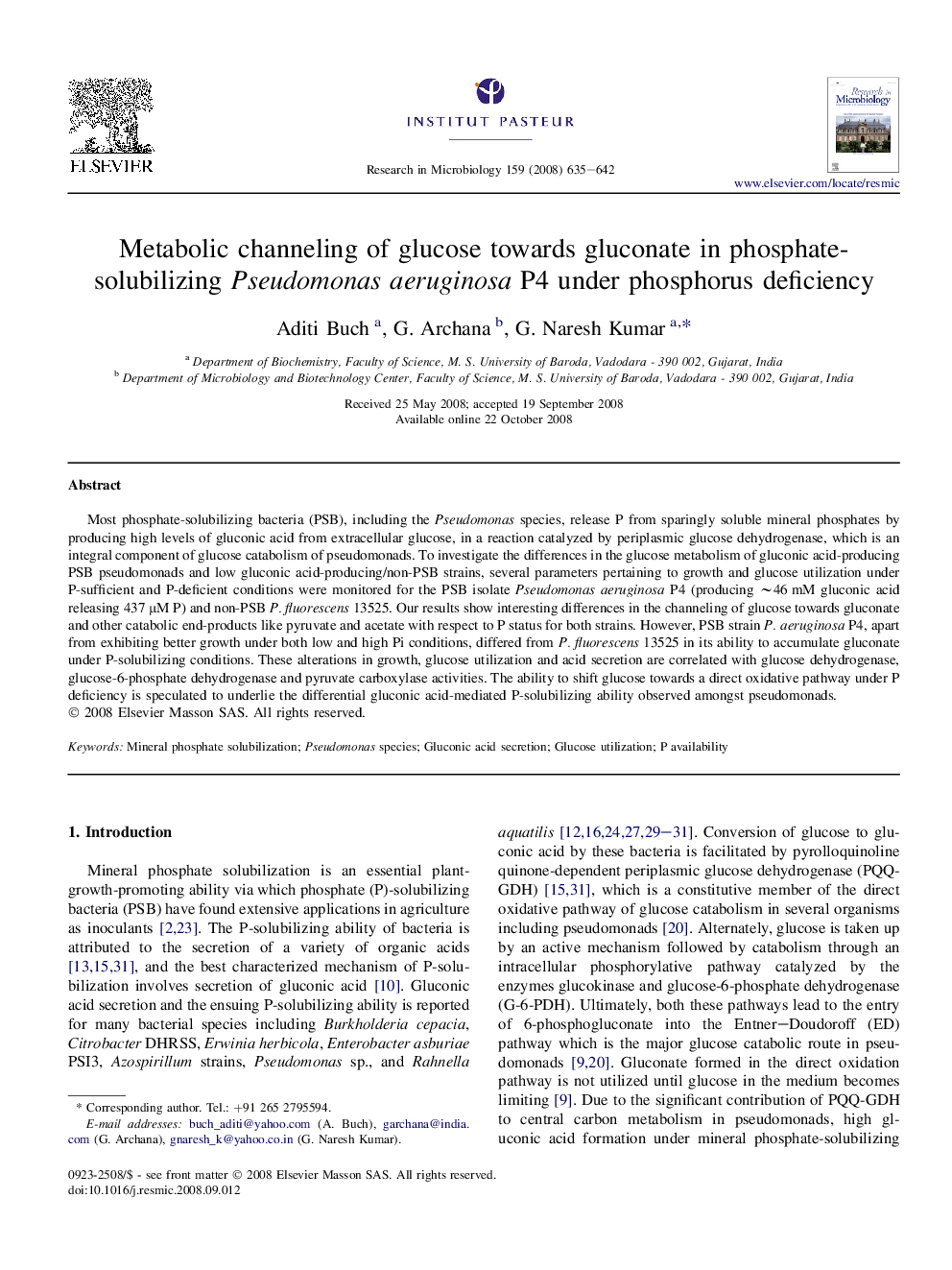| Article ID | Journal | Published Year | Pages | File Type |
|---|---|---|---|---|
| 6288198 | Research in Microbiology | 2008 | 8 Pages |
Abstract
Most phosphate-solubilizing bacteria (PSB), including the Pseudomonas species, release P from sparingly soluble mineral phosphates by producing high levels of gluconic acid from extracellular glucose, in a reaction catalyzed by periplasmic glucose dehydrogenase, which is an integral component of glucose catabolism of pseudomonads. To investigate the differences in the glucose metabolism of gluconic acid-producing PSB pseudomonads and low gluconic acid-producing/non-PSB strains, several parameters pertaining to growth and glucose utilization under P-sufficient and P-deficient conditions were monitored for the PSB isolate Pseudomonas aeruginosa P4 (producing â¼46 mM gluconic acid releasing 437 μM P) and non-PSB P. fluorescens 13525. Our results show interesting differences in the channeling of glucose towards gluconate and other catabolic end-products like pyruvate and acetate with respect to P status for both strains. However, PSB strain P. aeruginosa P4, apart from exhibiting better growth under both low and high Pi conditions, differed from P. fluorescens 13525 in its ability to accumulate gluconate under P-solubilizing conditions. These alterations in growth, glucose utilization and acid secretion are correlated with glucose dehydrogenase, glucose-6-phosphate dehydrogenase and pyruvate carboxylase activities. The ability to shift glucose towards a direct oxidative pathway under P deficiency is speculated to underlie the differential gluconic acid-mediated P-solubilizing ability observed amongst pseudomonads.
Related Topics
Life Sciences
Immunology and Microbiology
Applied Microbiology and Biotechnology
Authors
Aditi Buch, G. Archana, G. Naresh Kumar,
